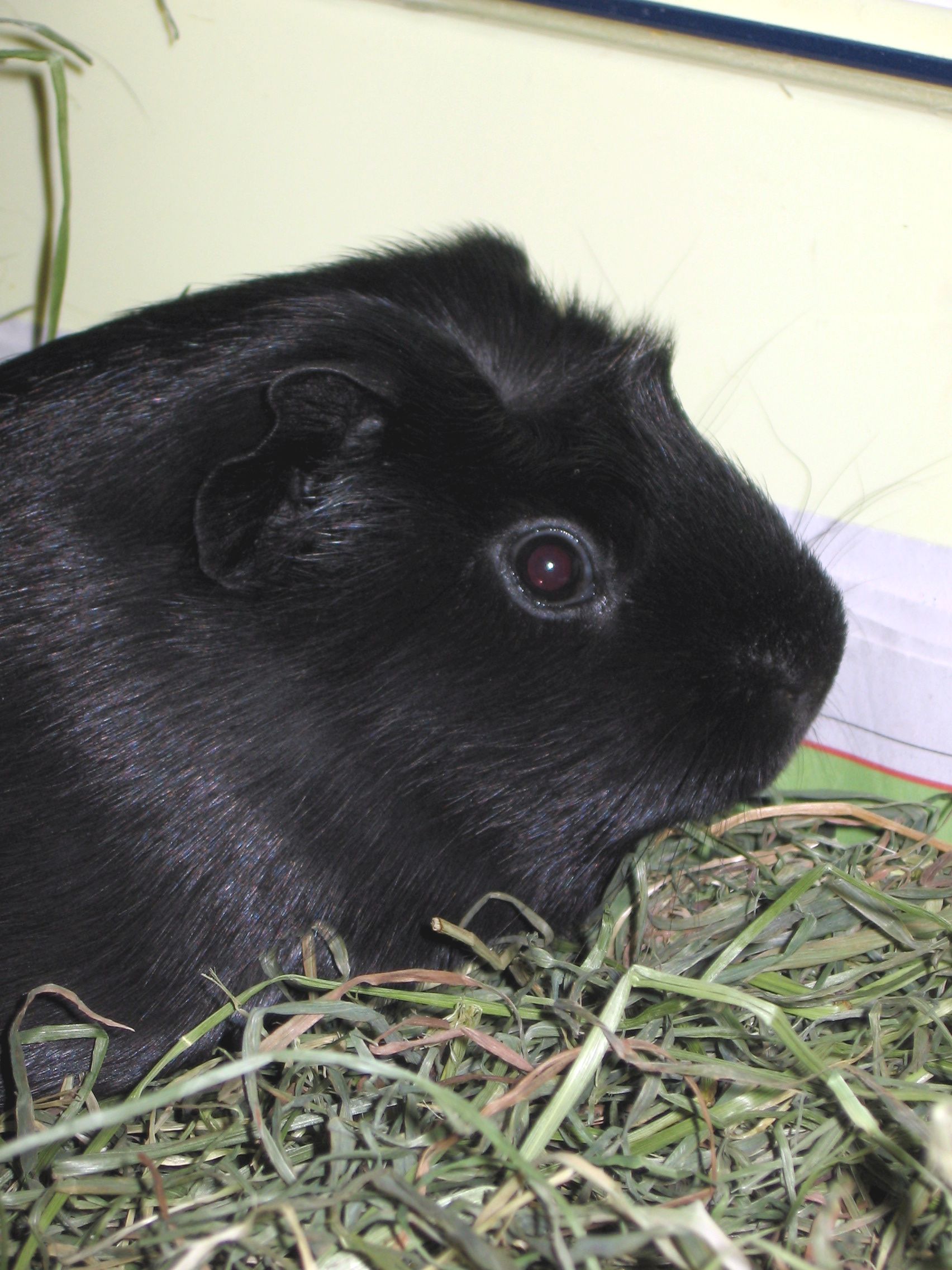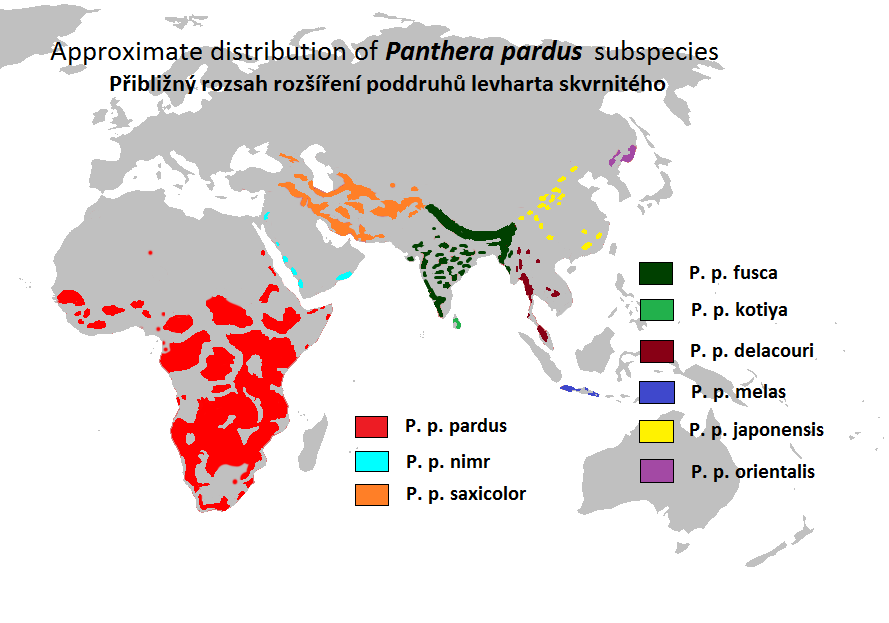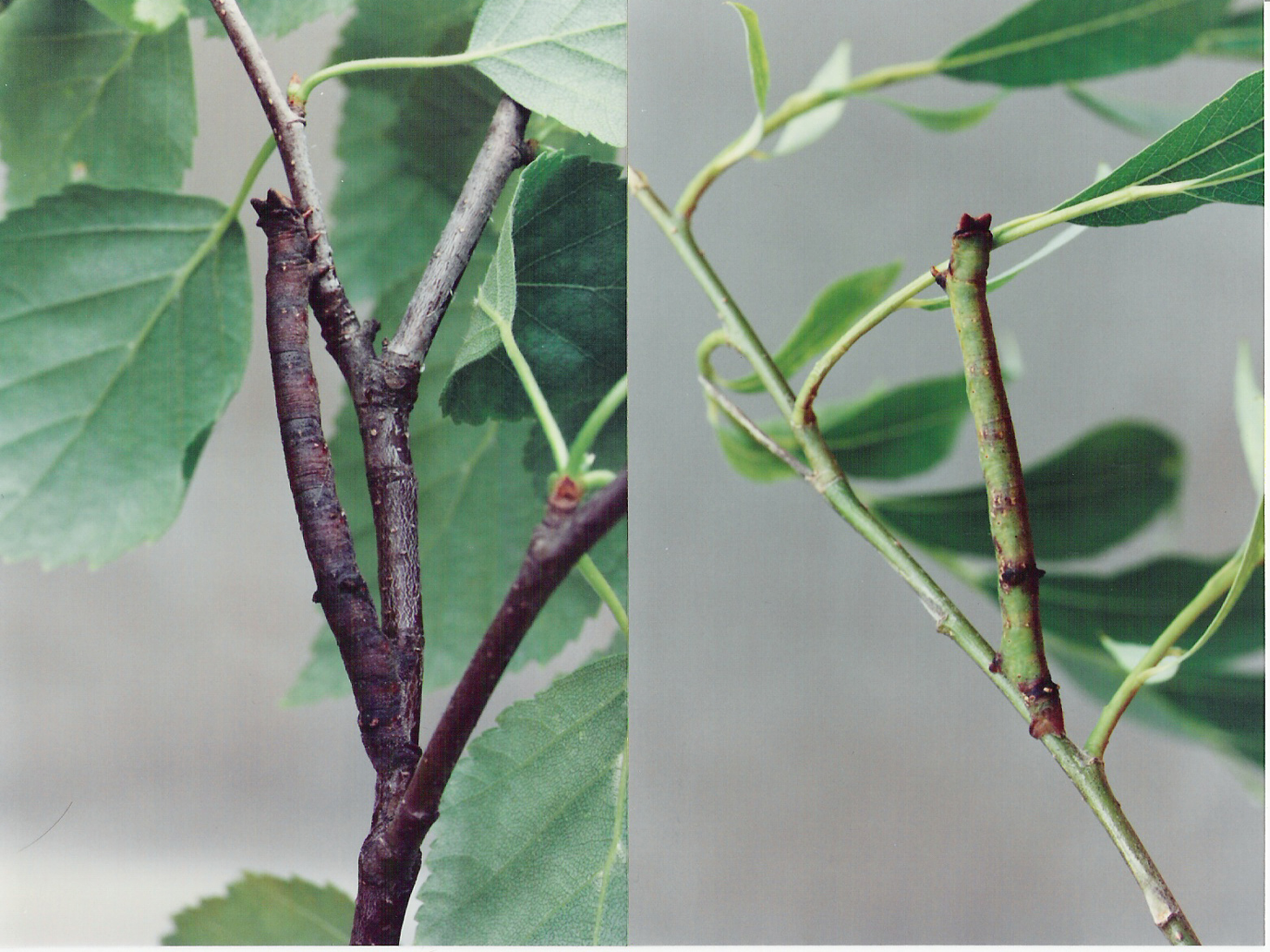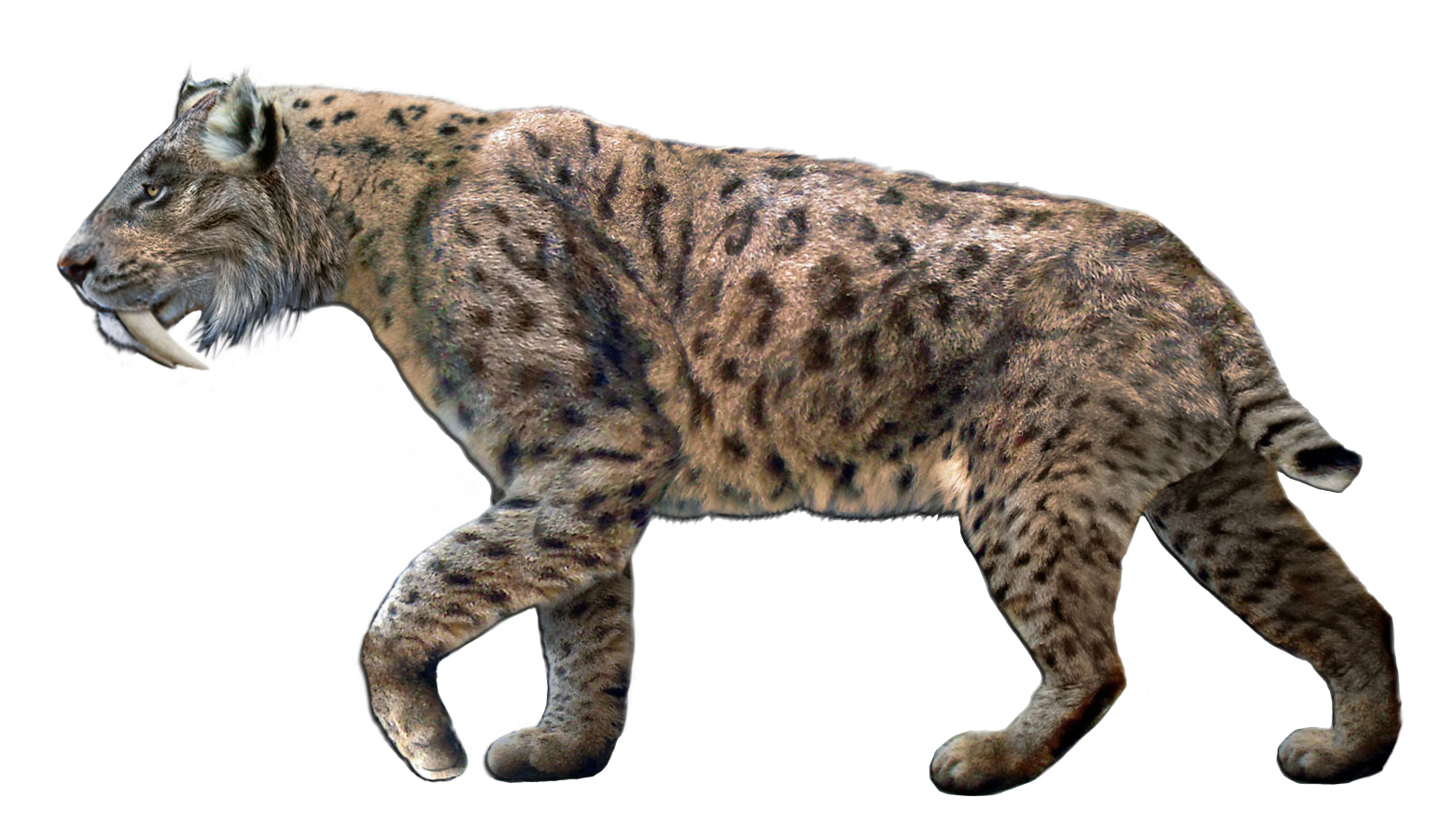|
Melanism
The term melanism refers to black pigment and is derived from the gr, μελανός. Melanism is the increased development of the dark-colored pigment melanin in the skin or hair. Pseudomelanism, also called abundism, is another variant of pigmentation, identifiable by dark spots or enlarged stripes, which cover a large part of the body of the animal, making it appear melanistic. The morbid deposition of black matter, often of a malignant character causing pigmented tumors, is called melanosis. Adaptation Melanism related to the process of adaptation is called adaptive. Most commonly, dark individuals become Fitness (biology), fitter to survive and reproduce in their environment as they are better camouflaged. This makes some species less conspicuous to predators, while others, such as leopards, use it as a foraging advantage during night hunting. Typically, adaptive melanism is Heritability, heritable: A Dominance (genetics), dominant allele, which is entirely or nearly ent ... [...More Info...] [...Related Items...] OR: [Wikipedia] [Google] [Baidu] |
Melanism In Panthera Onca
The term melanism refers to black pigment and is derived from the gr, μελανός. Melanism is the increased development of the dark-colored pigment melanin in the skin or hair. Pseudomelanism, also called abundism, is another variant of pigmentation, identifiable by dark spots or enlarged stripes, which cover a large part of the body of the animal, making it appear melanistic. The morbid deposition of black matter, often of a malignant character causing pigmented tumors, is called melanosis. Adaptation Melanism related to the process of adaptation is called adaptive. Most commonly, dark individuals become fitter to survive and reproduce in their environment as they are better camouflaged. This makes some species less conspicuous to predators, while others, such as leopards, use it as a foraging advantage during night hunting. Typically, adaptive melanism is heritable: A dominant allele, which is entirely or nearly entirely expressed in the phenotype, is responsible for ... [...More Info...] [...Related Items...] OR: [Wikipedia] [Google] [Baidu] |
Black Panther
A black panther is the melanistic colour variant of the leopard (''Panthera pardus'') and the jaguar (''Panthera onca''). Black panthers of both species have excess black pigments, but their typical rosettes are also present. They have been documented mostly in tropical forests, with black leopards in Kenya, India, Sri Lanka, Nepal, Thailand, Peninsular Malaysia and Java, and black jaguars of the Americas in Mexico, Panama, Costa Rica, Brazil and Paraguay. Melanism is caused by a recessive allele in the leopard, and by a dominant allele in the jaguar. Leopard In 1788, Jean-Claude Delamétherie described a black leopard that was kept in the Tower of London and had been brought from Bengal. In 1794, Friedrich Albrecht Anton Meyer proposed the scientific name ''Felis fusca'' for this cat, the Indian leopard (''P. p. fusca''). In 1809, Georges Cuvier described a black leopard kept in the Ménagerie du Jardin des plantes that had been brought from Java. Cuvier proposed the name '' ... [...More Info...] [...Related Items...] OR: [Wikipedia] [Google] [Baidu] |
Leopard
The leopard (''Panthera pardus'') is one of the five extant species in the genus '' Panthera'', a member of the cat family, Felidae. It occurs in a wide range in sub-Saharan Africa, in some parts of Western and Central Asia, Southern Russia, and on the Indian subcontinent to Southeast and East Asia. It is listed as Vulnerable on the IUCN Red List because leopard populations are threatened by habitat loss and fragmentation, and are declining in large parts of the global range. The leopard is considered locally extinct in Hong Kong, Singapore, South Korea, Jordan, Morocco, Togo, the United Arab Emirates, Uzbekistan, Lebanon, Mauritania, Kuwait, Syria, Libya, Tunisia and most likely in North Korea, Gambia, Laos, Lesotho, Tajikistan, Vietnam and Israel. Contemporary records suggest that the leopard occurs in only 25% of its historical global range. Compared to other wild cats, the leopard has relatively short legs and a long body with a large skull. Its fur is marked with rosett ... [...More Info...] [...Related Items...] OR: [Wikipedia] [Google] [Baidu] |
Leopards
The leopard (''Panthera pardus'') is one of the five extant species in the genus '' Panthera'', a member of the cat family, Felidae. It occurs in a wide range in sub-Saharan Africa, in some parts of Western and Central Asia, Southern Russia, and on the Indian subcontinent to Southeast and East Asia. It is listed as Vulnerable on the IUCN Red List because leopard populations are threatened by habitat loss and fragmentation, and are declining in large parts of the global range. The leopard is considered locally extinct in Hong Kong, Singapore, South Korea, Jordan, Morocco, Togo, the United Arab Emirates, Uzbekistan, Lebanon, Mauritania, Kuwait, Syria, Libya, Tunisia and most likely in North Korea, Gambia, Laos, Lesotho, Tajikistan, Vietnam and Israel. Contemporary records suggest that the leopard occurs in only 25% of its historical global range. Compared to other wild cats, the leopard has relatively short legs and a long body with a large skull. Its fur is marked with ... [...More Info...] [...Related Items...] OR: [Wikipedia] [Google] [Baidu] |
Biston Betularia
The peppered moth (''Biston betularia'') is a temperate species of Nocturnality, night-flying moth. It is mostly found in the northern hemisphere in places like Asia, Europe and North America. Peppered moth evolution is an example of population genetics and natural selection. The caterpillars of the peppered moth not only mimic the form but also the colour of a twig. Recent research indicates that the caterpillars can sense the twig's colour with their skin and match their body colour to the background to protect themselves from predators. Description The wingspan ranges from 45 mm to 62 mm (median 55 mm). It is relatively stout-bodied, with forewings relatively narrow-elongate. The wings are white, "peppered" with black, and with more-or-less distinct cross lines, also black. These transverse wing lines and "peppered" maculation (spotting) can also, in rare instances, be gray or brown; the spotting pattern, in particularly very rare cases, is sometimes a com ... [...More Info...] [...Related Items...] OR: [Wikipedia] [Google] [Baidu] |
Peppered Moth
The peppered moth (''Biston betularia'') is a temperate species of night-flying moth. It is mostly found in the northern hemisphere in places like Asia, Europe and North America. Peppered moth evolution is an example of population genetics and natural selection. The caterpillars of the peppered moth not only mimic the form but also the colour of a twig. Recent research indicates that the caterpillars can sense the twig's colour with their skin and match their body colour to the background to protect themselves from predators. Description The wingspan ranges from 45 mm to 62 mm (median 55 mm). It is relatively stout-bodied, with forewings relatively narrow-elongate. The wings are white, "peppered" with black, and with more-or-less distinct cross lines, also black. These transverse wing lines and "peppered" maculation (spotting) can also, in rare instances, be gray or brown; the spotting pattern, in particularly very rare cases, is sometimes a combination of b ... [...More Info...] [...Related Items...] OR: [Wikipedia] [Google] [Baidu] |
Felid
Felidae () is the family of mammals in the order Carnivora colloquially referred to as cats, and constitutes a clade. A member of this family is also called a felid (). The term "cat" refers both to felids in general and specifically to the domestic cat ('' Felis catus''). Felidae species exhibit the most diverse fur pattern of all terrestrial carnivores. Cats have retractile claws, slender muscular bodies and strong flexible forelimbs. Their teeth and facial muscles allow for a powerful bite. They are all obligate carnivores, and most are solitary predators ambushing or stalking their prey. Wild cats occur in Africa, Europe, Asia and the Americas. Some wild cat species are adapted to forest habitats, some to arid environments, and a few also to wetlands and mountainous terrain. Their activity patterns range from nocturnal and crepuscular to diurnal, depending on their preferred prey species. Reginald Innes Pocock divided the extant Felidae into three subfamilies: the Panth ... [...More Info...] [...Related Items...] OR: [Wikipedia] [Google] [Baidu] |
Camouflage
Camouflage is the use of any combination of materials, coloration, or illumination for concealment, either by making animals or objects hard to see, or by disguising them as something else. Examples include the leopard's spotted coat, the battledress of a modern soldier, and the leaf-mimic katydid's wings. A third approach, motion dazzle, confuses the observer with a conspicuous pattern, making the object visible but momentarily harder to locate, as well as making general aiming easier. The majority of camouflage methods aim for crypsis, often through a general resemblance to the background, high contrast disruptive coloration, eliminating shadow, and countershading. In the open ocean, where there is no background, the principal methods of camouflage are transparency, silvering, and countershading, while the ability to produce light is among other things used for counter-illumination on the undersides of cephalopods such as squid. Some animals, such as chameleons and o ... [...More Info...] [...Related Items...] OR: [Wikipedia] [Google] [Baidu] |
Polymorphism (biology)
In biology, polymorphism is the occurrence of two or more clearly different morphs or forms, also referred to as alternative ''phenotypes'', in the population of a species. To be classified as such, morphs must occupy the same habitat at the same time and belong to a panmictic population (one with random mating). Ford E.B. 1965. ''Genetic polymorphism''. Faber & Faber, London. Put simply, polymorphism is when there are two or more possibilities of a trait on a gene. For example, there is more than one possible trait in terms of a jaguar's skin colouring; they can be light morph or dark morph. Due to having more than one possible variation for this gene, it is termed 'polymorphism'. However, if the jaguar has only one possible trait for that gene, it would be termed "monomorphic". For example, if there was only one possible skin colour that a jaguar could have, it would be termed monomorphic. The term polyphenism can be used to clarify that the different forms arise from the s ... [...More Info...] [...Related Items...] OR: [Wikipedia] [Google] [Baidu] |
Felidae
Felidae () is the family of mammals in the order Carnivora colloquially referred to as cats, and constitutes a clade. A member of this family is also called a felid (). The term "cat" refers both to felids in general and specifically to the domestic cat (''Felis catus''). Felidae species exhibit the most diverse fur pattern of all terrestrial carnivores. Cats have retractile claws, slender muscular bodies and strong flexible forelimbs. Their teeth and facial muscles allow for a powerful bite. They are all obligate carnivores, and most are solitary predators ambushing or stalking their prey. Wild cats occur in Africa, Europe, Asia and the Americas. Some wild cat species are adapted to forest habitats, some to arid environments, and a few also to wetlands and mountainous terrain. Their activity patterns range from nocturnal and crepuscular to diurnal, depending on their preferred prey species. Reginald Innes Pocock divided the extant Felidae into three subfamilies: the P ... [...More Info...] [...Related Items...] OR: [Wikipedia] [Google] [Baidu] |
Melanosis
Melanosis is a form of hyperpigmentation associated with increased melanin. It can also refer to: * Melanism * Ocular melanosis * Smoker's melanosis * Oral melanosis * Riehl melanosis See also * List of cutaneous conditions Many skin conditions affect the human integumentary system—the organ system covering the entire surface of the body and composed of skin, hair, nails, and related muscle and glands. The major function of this system is as a barrier against t ... References External links Dermatologic terminology {{dermatology-stub ... [...More Info...] [...Related Items...] OR: [Wikipedia] [Google] [Baidu] |
Melanin
Melanin (; from el, μέλας, melas, black, dark) is a broad term for a group of natural pigments found in most organisms. Eumelanin is produced through a multistage chemical process known as melanogenesis, where the oxidation of the amino acid tyrosine is followed by polymerization. The melanin pigments are produced in a specialized group of cells known as melanocytes. Functionally, eumelanin serves as protection against Ultraviolet, UV radiation. There are five basic types of melanin: eumelanin, pheomelanin, neuromelanin, allomelanin and pyomelanin. The most common type is eumelanin, of which there are two types— brown eumelanin and black eumelanin. Pheomelanin, which is produced when melanocytes are malfunctioning due to derivation of the gene to its recessive format is a cysteine-derivative that contains polybenzothiazine portions that are largely responsible for the of red yellow tint given to some skin or hair colors. Neuromelanin is found in the brain. Research ha ... [...More Info...] [...Related Items...] OR: [Wikipedia] [Google] [Baidu] |








